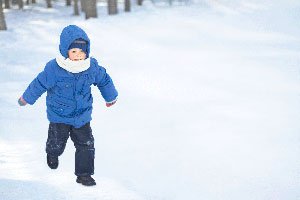Baby it’s cold outside!
Part 2: Preventing injuries from cold weather and heat loss
Kevin Sirmons, MD, NRP
EMS Medical Director
CentraCare Health – Monticello
 This is a great time of year to be enjoying the peace of the frosted woods while snow shoeing; catching fish on one of Minnesota’s beautiful lakes, or soaring down the hill on skis or snowboard.
This is a great time of year to be enjoying the peace of the frosted woods while snow shoeing; catching fish on one of Minnesota’s beautiful lakes, or soaring down the hill on skis or snowboard.
When outdoors during cold weather take precautions and keep in mind these tips:
- Protect from dehydration. For children, schedule times for drinking fluids. Adults should drink ½ to 1 quart per hour, during heavy workloads.
- Avoid alcohol and caffeine. These are diuretics and increase urinary loss of water.
- Buddy checks, patrol leader or parental checks are important when out with a group in cold weather. Enforce rules for children in the cold. Immediately treat persons showing any signs/symptoms of cold injury. Each individual should carry a cold-weather survival kit at all times.
- Nutrition: Adults should have an intake of 3,000-4,000 calories a day when working hard in cold environments. Increase food calorie intake to 1.5-2 times normal daily intake when working in the cold.
- Limit exposure if possible. Divide tasks into shorter segments to allow for re-warming breaks. Rewarm gloves/footwear, and change them during these breaks to allow drying. Use a two-team approach; one team works while the other rewarms. In the best case scenario, evaluate if you need to be out in the cold.
- Dressing for the COLD:
- Keep clothing Clean
- Avoid Overheathing
- Wear clothing in Layers
- Keep clothing Dry
- Make wise clothing choices:
- Change socks often and use synthetic fibers. Synthetics have better wicking ability to get sweat away from skin, versus natural fibers.
- Cover your head and neck.
- Loose, layered, windproof. Change often if needed to stay dry and warm.
- Layering Tips
- First layer (closest to skin): Polyproylene underwear, tops and bottoms
- Second layer: Wool
- Third layer: Jacket liner
- Fourth layer: GoreTex parka and pants
- Footwear/headwear
- Vapor barrier boots: ensure they are dry inside. Dry out nightly. Use foot powder and antiperspirant when possible. Change your socks every four hours to keep them dry.
- Protect hands with mittens that fit loosely. Keeping fingers close together will decrease heat loss. The separation of fingers in gloves allows for conductive and convective heat loss between the fingers.
We live in a cold climate so enjoy the season, but stay safe!
Read Part 1 to learn about injuries related to cold temperatures and read Part 3 to find out the top 5 ways bodies lose heat.